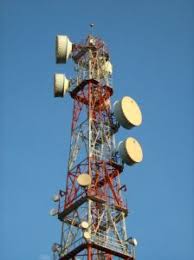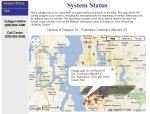 On May 31st the First Responder Network Authority – FirstNet – accepted proposals from private companies to build its nationwide public safety wireless LTE network. We don’t know how exactly many companies or groups of companies submitted proposals (although today Rivada announced a number of its partners who have together submitted one bid). We do know FirstNet has been quite public in its process and wants a “vendor partner” who will develop and deploy its nationwide network with a lifespan of 25 years and an estimated value of $100 billion.
On May 31st the First Responder Network Authority – FirstNet – accepted proposals from private companies to build its nationwide public safety wireless LTE network. We don’t know how exactly many companies or groups of companies submitted proposals (although today Rivada announced a number of its partners who have together submitted one bid). We do know FirstNet has been quite public in its process and wants a “vendor partner” who will develop and deploy its nationwide network with a lifespan of 25 years and an estimated value of $100 billion.
But why would any police department or fire department or transportation authority or electric utility or other agency which responds to public safety incidents ever “buy” and use FirstNet?
Almost every agency involved with the protection of the safety of the public – first responders but also utilities and transportation and public works and others – already uses a wireless LTE network for its field workers. T-Mobile, Sprint, Verizon, AT&T and others have robust networks which are getting better every day.
Why would an agency switch from a proven network provider to a network provided by an untested partner of a federal government agency?
Here are some good reasons, if FirstNet and its contracted vendor can make them happen:
- Public safety partners. FirstNet talks a lot about its industry or vendor partner. FirstNet needs to speak about and model its partnership with public safety agencies too. Responder agencies can and do buy services as a “customer” from many carriers. And, frankly, the commercial services are quite good. To be competitive FirstNet – and whoever gets its contract – need to build a model where its “partner” responder agencies have a lot of input and control over its products.
- A great vendor partner. Generally public safety agencies have a love-hate relationship with their telecommunications carrier. Each agency can enumerate a set of concerns and issues with their provider. FirstNet will almost completely rely upon the winner of its RFP to provide service to its public safety partners (customers). Indeed, if it weren’t for item #1 – the need for a true “partnership” with public safety agencies – FirstNet might devolve into a simple contract administration bureau. FirstNet must choose a vendor which can rapidly deploy the network, make it robust, and provide superior, turn-on-a-dime, service superior to the existing carriers.
- Public Safety users. FirstNet must be broad – embrace a “big tent” – in its definition of public safety responders. Clearly many governmental and non-government agencies have public safety responsibilities and should be able to use FirstNet, at least part time: transportation, transit, public works, elected officials, emergency management, water/electric/wastewater utilities and more. Furthermore many individuals volunteer their time for search-and-rescue, firefighting, paramedic, and other public safety functions, and need some access to FirstNet. Even the media (TV, radio, newspapers, etc.) have a public safety/information responsibility during daily incidents and disasters.
- Commercial and consumer service conflicts. A broad definition of an allowable user as defined in paragraph 3 above would take customers away from the commercial carriers, which was not the intent of Congress. So FirstNet and its vendor must devise some way of “deputizing” users. For example, when a citizen transforms from a consumer to a volunteer firefighter, their personal device must be “deputizable” to become a FirstNet device, transitioning from the citizen’s commercial carrier to the FirstNet-authorized service befitting a public safety responder. Indeed, when a teacher is in a classroom and her school goes into lockdown for any reason, that teacher can become a “first responder” and should become a FirstNet user able to communicate to responding law enforcement officers.
- Priority. Priority for first responders is often cited as THE significant advantage of FirstNet. Traditionally priority service has not been available from commercial carriers. However both Verizon and AT&T are offering or planning to offer such service. FirstNet’s priority service must be clearly superior.
- Local control. In the past, “local control” has meant local control of priority – having an incident commander able to designate which users or devices or applications have network priority. We’ve come to recognize that LTE has considerable inherent mechanisms for this, which do not need much manual intervention. Most local control of priority can be handled during provisioning. The federal Department of Commerce’s Public Safety Communications Research (PSCR) group and FirstNet are well down the road of developing mechanisms for such local control and they need to be implemented.
- Local control of deployment and expansion. Public safety agencies have little control over the deployment and expansion plans of commercial carriers. Occasionally an agency will say to a carrier “we really need another cell site here” or “please don’t do maintenance and bring the network down at 2:00 AM Sunday morning as the bars are closing”. FirstNet, however should offer much better local control over network deployment and expansion. FirstNet – or its state partners – might have public processes and even workshops and conferences where regions can specify their priorities for expanding coverage, or adding applications or improving capabilities such as those listed below. Such “local control” will be the truest and best demonstration that this network is, indeed “public safety’s network”.
- Deployables.
It is not feasible to deploy cell towers across an entire large state or geography, particularly if most of that geography is national forest or desert. Yet communications are really important in the first hours of a disaster or emergency like a wildfire. In 2014 three firefighters died during the initial attack on an emerging wildfire in the state of Washington. FirstNet could be much more dynamic than commercial carriers in rapid deployment of cell sites during such an event. PSCR is researching small fleets of unhumaned aerial vehicles (UAV) containing such sites which could be quickly launched after a wildfire or landslide or other disaster occurs. Other solutions might include cell sites on fire apparatus, back-packable sites, cell sites on trucks and so forth. This demonstrated ability to rapidly deploy would hasten adoption of FirstNet by local agencies.
- Voice. Any cellular network offers cellular telephone calling – one person calling another. FirstNet needs to offer a wider range of voice calling apps for responders. One such capability is push-to-talk – where a single user can push a single button and communicate with a whole police department or fire department, and dispatchers can use the same capability to broadcast to an entire precinct of patrol officers. Another capability is “direct mode” where one device can talk to others nearby without the need to communicate through a cell phone tower (which may be destroyed by a natural disaster). PSCR is actively working on such capabilities.
- Private “channels” for user groups. Channels would allow, for example, tribal police departments across a state or the nation to communicate (voice, video, text, email etc.) with each other privately. There really no comparable communications mechanism available today, as each county or department has its own land-mobile radio network and it is hard to interoperate across large geographies. Private channels could be used by elected officials across a region to communicate securely during a disaster, tribal gambling agents at multiple casinos to talk about emerging enforcement issues, or multiple fire departments from a wide region, all responding to a wildland fire, to communicate with each other and air support.
- Provisioning. Every agency has people who buy stuff. FirstNet and its contracted vendor need to make it easy to buy it stuff – tablet computers, smart phones, traffic ticketing devices, body-worn video cameras and more. But FirstNet can also bring additional capability to this process. A police department, for example, will want its Samsung S7 smartphones configured with a certain set of free commercial apps (Google maps), its own vendor apps (computer-aided dispatch), perhaps local apps (crisis intervention app or wanted/warrants app) and a mobile device management system (for example: Airwatch, Mobileiron, Intune). A police department will also want encryption, VPN, advanced authentication (FBI CJIS policy). If FirstNet and its vendor can offer a quick and simple configuration tool to ship devices to each department pre-configured, it would be a significant advantage to the using agency. PSCR is actively working on a mobile device architecture which would enable these capabilities.
- Provisioning roles. FirstNet should be planning to allow responder agencies to specify certain roles for users, applications and devices. For example a police officer might have a role of “patrol officer” and be carrying a device with the role “body-worn video camera” using an application such as “streaming video”. Police departments should be able to define such roles for all their users, applications and devices. This provisioning – and the ability to make rapid changes in provisioning (e.g. from police patrol officer to SWAT member) feeds right into the local control of priority specified above.
- Fusion center apps. There are about 70 fusion centers nationwide who collect information to help detect and prevent terrorism, gang activities and other criminal issues. Fusion centers have trained a cadre of liaisons who feed them information about suspicious activities. But communications between fusion centers and such liaisons or other agencies can be hard. A special app or a private channel could significantly improve the functioning of fusion centers be allowing law enforcement and other liaison officers to rapidly and securely send information to the fusion center, and the fusion center to rapidly disseminate intelligence to responders.
- Opt-in Plus. FirstNet and its contracted vendor could use (and pay for) sites already owned by local and state governments in order to improve coverage and capacity. FirstNet could also allow local and state agencies to buy eNodeB’s (cell sites) and similar equipment for deployment on fire apparatus or other areas which need coverage.
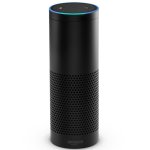
Amazon’s Echo
- Personal assistants, speech-to-text and similar leading edge capabilities. Consumers know and use Siri and Cortana and Amazon’s echo. FirstNet should provide such capabilities – tailored to public safety’s unique lexicon and need – for using agencies.
There are a whole host of other potential capabilities which would give FirstNet a marketing and service edge on commercial carriers, helping to encourage public safety responder agencies to switch to the FirstNet service. A few others are:
- Robust, virtually unbreakable, cybersecurity.
- ICAM – identity, credentialing and access management to identify the user of the device as well as the device.
- “Public safety grade” – rock-solid sites, electronics, backhaul able to withstand disasters local and regional – earthquakes and hurricanes and terrorism.
- High sites or “boomer” sites in rural and remote areas to cover wide swaths of area.
- 911 calling for FirstNet users, plus also secondary users who are consumers and businesses.
- Integration with public safety answering points (PSAPs), their emergency service internet protocol networks (ESI Nets).
- Integration with Next Generation 911.
- A robust applications store of curated, tested, cyber-secure applications.
- Certain nationwide apps or capabilities deployed on every responder device, e.g. situational awareness.
- IoPST – The Internet of Public Safety Things. This is a future network where sensors and cameras and intelligent transportation systems and fire detection and similar interconnected devices send information to responders quickly to help in mitigation of public safety incidents.
- IoFRT – The Internet of First Responder Things. This is a future network which includes sensors and devices on First Responders or their vehicles or nearby to monitor them and keep them safe as they protect the public.
State and local responsibilities. “Partnerships” are two-way. Local and state responder agencies – governmental, non-governmental and private – need to be good partners with FirstNet and its contracted vendor too. I’ll write more about this in the future, but these using agencies need to, for example:
- Standardized applications statewide, e.g. push-to-talk apps or situational awareness/mapping apps, which help to coordinate response from multiple agencies to a single incident or disaster.
- Designate knowledgeable officials to work with FirstNet and its contracted vendor to design and deploy the network locally.
- Work with FirstNet to help prioritize needs across a region or a state. Such needs might be expanded coverage, apps and app stores, in-building coverage and more.
- Insofar as possible, help remove or mitigate local permitting and regulatory processes thereby allowing rapid FirstNet deployment to occur.
- Step up and fund user fees and devices for those local and state responders – volunteer firefighters for example – who cannot afford them.
Sue Swenson, Chair of the FirstNet Board, laid down the challenge to FirstNet staff in a speech at the PSCR Annual Conference on June 7, 2016, in San Diego. Over the next year, she said, FirstNet needs to plan for the “excellent operation of this network.” FirstNet “has to be better than any other network in the world today.”
She went on to say FirstNet is “demanded by public safety, shaped by public safety, FirstNet is public safety’s network.”
Amen.

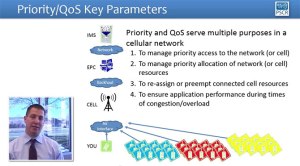

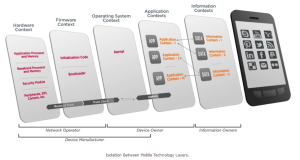

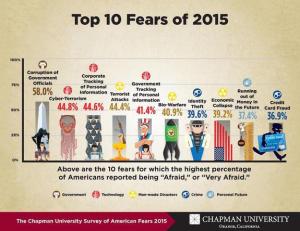 Americans fear government corruption more than anything else.
Americans fear government corruption more than anything else.

